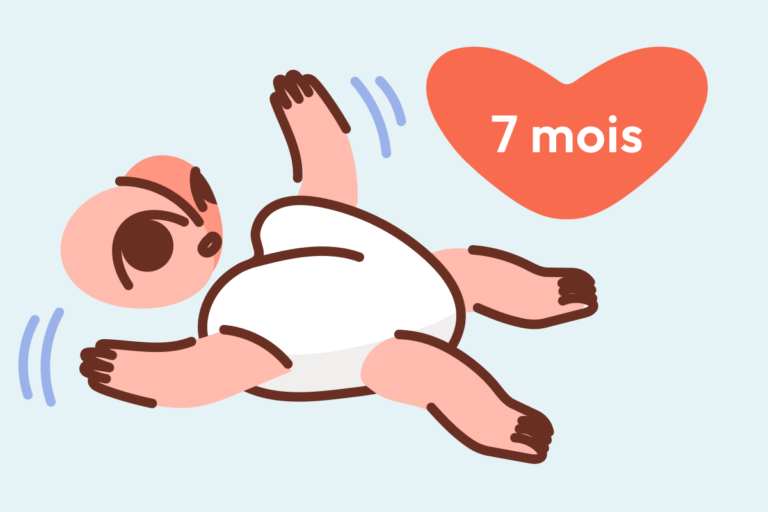The sight of watery, teary eyes in newborns can prompt a wave of questions. Is it an infection? Is it something serious? The answer is often surprisingly reassuring: in many cases, blocked tear duct in infants is to blame—a condition known medically as congenital nasolacrimal duct obstruction or dacryostenosis. Such little hiccups, though common, can be unsettling. Why do tears roll down those cheeks even when your baby is calm? Why does yellowish discharge gather at the inner eye corner after a nap? And above all, what can you do to help your child find relief, while ensuring you’re not missing something more urgent? Let us address these questions with clarity, explaining causes, best care strategies, and exactly when a paediatrician’s opinion becomes necessary.
What Is a Blocked Tear Duct in Infants?
A blocked tear duct in infants simply means that the passageway carrying tears from the eye to the nose—the nasolacrimal duct—is either not fully opened or is obstructed. Instead of draining away quietly, tears overflow onto the cheeks. This block often stems from a fine membrane covering the duct’s nasal end, which sometimes takes months to open on its own. The phrase “congenital” reflects its presence from birth, even if symptoms show up weeks later.
It might surprise you, but up to 20% of newborns demonstrate symptoms related to this “tear traffic jam.” Occasional stickiness on the eyelashes, particularly after sleep, or a persistent watery gaze—these are textbook clues. The cause? Often delayed development of the duct’s final section. Premature infants or those with certain inherited traits sometimes see this more frequently. Worth noting: blocked tear duct in infants is different from pink eye (conjunctivitis) or more rare eye diseases like infantile glaucoma. If you notice clouding of the cornea, intense redness, or your baby shielding their eyes from light, do not hesitate to consult your doctor.
How Do Tears Normally Drain? The Mechanism Behind the Issue
Underneath every blink lies a precisely choreographed drainage system: tears, produced by the lacrimal glands, sweep across the eye to keep it clean and comfortable. Tiny openings (called puncta) sit at the inner corners of the eyelids, like drains in a sink, leading tears down a narrow tube—the nasolacrimal duct—and finally into the nose. Now picture a missing piece: if that duct doesn’t open at the nasal end, tears circle back, escaping onto the skin. This simple mechanical failure is at the heart of most cases of blocked tear duct in infants.
Why Does a Blocked Tear Duct Happen? Causes and Risk Factors
- Congenital Membrane: Often a thin, leftover membrane remains at the bottom of the tear duct, blocking passage for months after birth.
- Narrow Ducts: Some infants simply inherit very slim drainage channels, making tears less likely to drain easily.
- Structural Variant: On rare occasions, the puncta (drain openings) are misplaced or malformed.
- Inflammation/Irritation: Sometimes, an eye infection swells the duct shut, or injury leads to temporary blockage.
- Associated Syndromes: Conditions that impact facial structure (e.g., Down syndrome) can increase the chance of drainage issues.
Premature birth marks another notable risk—these babies often have more immature tear systems.
Recognising Symptoms: What Do Parents Notice?
Do you find yourself dabbing away tears all day long, even when your child is smiling? Typical indicators that a blocked tear duct in infants may be the cause:
- Persistent watery eyes (also known as epiphora), regardless of crying.
- Pooling of tears on the lower eyelid or cheeks for no obvious reason.
- Yellow or sticky discharge, especially on waking up, sometimes forming mild crusts.
- Eyelids appearing stuck together in the morning due to dried secretions.
- Slight redness or morning swelling at the inner part of the eye, usually from frequent cleaning.
- Swelling around the tear duct, more obvious after bouts of crying or during periods of wind and dust.
Sometimes, only one eye is affected—other times, both.
Warning Signs: When Should You Look Deeper?
There are moments that raise a red flag, such as:
- Distinctly yellow or greenish discharge that persists,
- Redness escalating beyond the inner corner,
- Eyelids becoming swollen, particularly if warm to the touch,
- Difficulty in opening the eye due to crusts,
- Fever higher than expected,
- Spreading redness across the face or eyelid,
- Your child refusing to open the affected eye or showing increased irritability, possibly signalling pain.
These findings may point to an infection like dacryocystitis, a complication requiring immediate medical supervision.
Diagnosis: A Paediatrician’s Eye for Detail
Diagnosis leans heavily on simple observation and physical examination. Your doctor will look for ongoing watery eyes, patterns of discharge, and whether the swelling appears above the lacrimal sac (located just beside the nose, below the eye). Sometimes a gentle press here expresses more mucus or tears—strongly suggesting obstruction.
In select cases, a dye disappearance test is performed: a harmless coloured drop is placed in the eye, and its progress is timed—if it lingers, the passage likely remains closed. Differential diagnosis is key: ruling out conjunctivitis, infantile glaucoma, or other medical concerns.
Everyday Care: How to Help at Home
Many times, blocked tear duct in infants resolves well before the first birthday, especially with patient, consistent care. Here are the practical tools:
Eye Cleaning: The Gentle Approach
- Use a soft, sterile cotton ball or clean cloth, well-soaked in warm, boiled water (cooled to a safe temperature).
- Gently wipe the affected eye from the nose outward, always using a fresh piece for each pass.
- Wash your hands before any eye care.
Tear Duct Massage: Encouraging Nature’s Course
Ask your doctor to demonstrate, but the basic technique involves:
- Clean hands, short fingernails.
- Placing your fingertip just below the tear duct (inside eye corner), using mild downward pressure along the side of the nose.
- Employing a gentle, circular motion—about 10 strokes, 2 times daily.
- Avoiding harsh force.
This massage can boost the natural opening of the membrane. Improvement might show over weeks as discharge and watering decrease.
Saline Solution and Warm Compress
Saline-soaked pads help loosen dried secretions. Warm (not hot) compresses placed over the closed eyelid for 2–5 minutes can soften crusts and provide comfort.
Hygiene Habits: Prevention Matters
- Frequent hand washing for caregivers and anyone interacting with the baby.
- Avoid unwashed hands near the eyes.
- Keep baby sheltered from smoke, dust, or wind, as these aggravate irritation.
When to Consult the Doctor? Knowing the Right Time
If symptoms persist despite weeks of massage and cleaning—or if the signs of infection, severe swelling, or fever arise—medical expertise is your best ally. Treatment options after this threshold may involve:
- Antibiotic Drops/Ointment: Used if pus or clear infection is present.
- Oral Antibiotics: Reserved for severe inflammation or spreading infection like dacryocystitis.
- Probing: If the blocked tear duct in infants does not clear up within 6 to 12 months, a specialist might perform probing, which is a brief, minimally invasive procedure.
- Balloon Dilation or Stenting: Rare, but sometimes used in complex or recurrent cases, where a small tube or balloon maintains duct patency.
Surgical Options: Rarely Needed, Highly Effective
Most children overcome blocked tear duct in infants with conservative measures. If intervention is needed, results are good and recurrence is rare. Aftercare routinely includes avoiding eye rubbing, using prescribed drops, and ensuring post-procedure reviews.
Recovery, Patience, and Support
It may be tempting to try every possible fix, yet sometimes the wisest solution is to trust in gradual recovery. Cleanliness, patience, and the right massage technique are genuinely powerful. Most babies’ ducts open naturally in time—a victory for gentle persistence.
Family stories abound of sticky mornings giving way to clear, bright-eyed days after weeks or months. Feeling uncertain along the way? Seeking support from experienced caregivers, trusted communities, and digital paediatric tools can offer extra reassurance.
Key Takeaways
- Blocked tear duct in infants is a common, benign issue—most often resolving with routine home care.
- Cleaning with saline, tear duct massage, warm compresses, and careful hygiene are frontline therapies.
- Infections or persistent symptoms call for paediatric evaluation.
- Interventions like probing or stenting are infrequent and safe when performed by specialists.
- There are no long-term vision effects from a simple blocked tear duct in infants.
- Whenever doubts linger, support and expertise are within reach. Explore tools like the application Heloa for customised advice and free health questionnaires tailored to your child’s needs.
Questions Parents Ask
Can a blocked tear duct in my baby cause vision problems later?
No need to worry—blocked tear duct in infants almost never affects vision development. Tears may overflow or crust accumulate, but the eyes themselves function normally as the blockage clears. Any unusual behaviour in tracking, focusing, or visual response warrants a check-up but is rarely connected to the blocked duct itself.
What does it mean if discharge becomes yellow or green? Should I be concerned?
A mild, clear or lightly sticky discharge is typical with blocked tear duct in infants. However, when the discharge turns yellow or green, becomes thick, or is paired with swelling, redness, or tenderness, it signals possible infection. This is when your child should be seen promptly by a medical professional.
Is there anything I can do to prevent a blocked tear duct?
Because the issue is often congenital, prevention isn’t always possible. Yet, you can definitely support your baby’s comfort: regular gentle eye cleaning, maintaining proper hand hygiene, and shielding the eyes from irritants like dust and smoke make a difference. Learning the correct massage method from your paediatrician also supports natural improvement and minimises complications.
How long does a blocked tear duct in infants usually last?
Most cases resolve on their own by 6 to 12 months, though some take a few extra weeks. If the blockage persists beyond a year or signs of infection appear before that, consultation with a specialist ensures the best care.
Should both eyes be affected at the same time?
Usually, blocked tear duct in infants involves only one side, but both can be affected in some cases—especially when developmental factors play a role. Individual differences are common, and the care approach does not change whether one or both eyes are involved.
What is the probing procedure? Is it painful for my baby?
Probing is a straightforward process done by a paediatric ophthalmologist under local or, rarely, brief general anaesthesia. A fine instrument opens the obstruction, offering instant relief for most infants. There might be minor discomfort or watering for a day, but complications are rare with expert care.
Can home remedies like breast milk drops help treat a blocked tear duct?
Some traditional advice recommends breast milk for cleaning, but clinical support for this remedy is limited. Using saline and following your doctor’s hygiene recommendations remain the best-supported strategies for managing blocked tear duct in infants safely.
When should I stop massaging and cleaning if it’s not improving?
After consistent home care (several weeks) without improvement, or if symptoms such as infection, high fever, or swelling appear, it is wise to consult a paediatrician. Further treatment may be required, based on a thorough assessment.
For more guidance adapted to your child, consider seeking digital resources and connecting with trusted paediatric tools such as the application Heloa.
Further reading:
–









